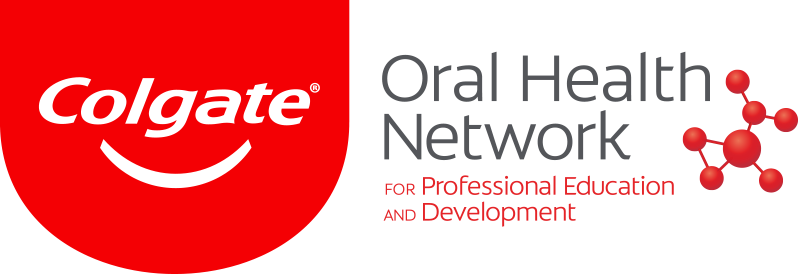SÃO PAULO, Brazil: In a discovery that may help the early identification of oral squamous cell carcinoma (OSCC), researchers in Brazil have found a correlation between the cancer’s progression and the abundance of specific proteins present in tumor tissue and saliva. The discovery offers parameters for predicting the progression of the disease and may help in overcoming the limitations of clinical and imaging exams.
“We worked on the study for five years until we achieved this breakthrough,” said contributing author Adriana Franco Paes Leme, a researcher at the Brazilian National Bioscience Laboratory—part of National Energy and Materials Research Center (CNPEM) in São Paulo.
During the first phase of the study, researchers used laser microdissection and proteomics to map the proteins in mouth cancer tissue and correlate them with the clinical characteristics of the patients. This analysis enabled the identification of several proteins, such as CSTB, NDRG1, LTA4H, PGK1, COL6A1, ITGAV and MB—with differing levels of abundance depending on the tumor area—and link them to key clinical outcomes.
After identifying and quantifying proteins in about 120 tumor tissue samples, the second phase of the study saw researchers deploy two protein verification strategies. “One strategy consisted of gauging the abundance of the selected proteins in independent tissue samples using immunohistochemistry with antibodies. The other consisted of monitoring the same preselected targets in patients’ saliva,” explained Paes Leme.
“Saliva is a promising source of markers, as well as being a fluid obtained by noninvasive collection,” she explained. “We verified the proteins in saliva from 40 patients. Technical triplicates were analyzed to achieve the highest possible confidence level for the results in this phase of the study.”
After analyzing the saliva samples, researchers used bio-informatics and machine learning techniques to obtain prognostic signatures. From here, they were able to verify which of the proteins or peptides were selected during the first phase and could thereby distinguish between patients who had or did not have cervical lymph node metastasis.
According to the study’s results, it was possible to identify three specific peptides—LTA4H, COL6A1 and CSTB —that can be used as a signature to classify patients with and without cervical lymph node metastasis. Researchers believe that this could potentially help doctors overcome the limitations of clinical exams and guide personalized treatment strategies.
“The data led to robust results that are highly promising as guides to defining the severity of the disease. We suggested potential markers of the disease in the first phase of the study and verified these markers in the second phase, enhancing the reliability of the findings and showing that these markers are effective in classifying patients with cervical lymph node metastasis,” said Paes Leme.
Scientists are now working on a new study designed to use translational techniques to build affordable biosensors that are capable of detecting prognostic signatures in patients’ saliva.
The study, titled “Combining discovery and targeted proteomics reveals a prognostic signature in oral cancer”, was published on September 5 in Nature Communications.
Partners of the study included the São Paulo State Cancer Institute, the University of Campinas's Piracicaba Dental School and Institute of Computing, the University of São Paulo's Mathematics and Computer Science Institute in São Carlos, the Dental School of the West Paraná University, as well as other institutions in and outside of Brazil. It was funded by the São Paulo Research Foundation, with the research conducted at the National Energy and Materials Research Center.
Tags:
LOS ANGELES, U.S.: Recent studies showing an increase in patients with periodontitis, as well as studies linking it with Alzheimer’s disease, have led to ...
NORMAN, Okla., U.S.: A considerable proportion of oral cancer diagnoses are made when the cancer is advanced. A University of Oklahoma (OU) researcher is ...
NANCHANG, China: Social media adverts for whitening products show celebrities flaunting their pearly whites, putting pressure on consumers to conform to the...
SACRAMENTO, Calif., U.S.: Through science, our ability to decode the past has continued to improve. In another advancement that will help archaeologists ...
LEEDS, UK: Xerostomia is a prevalent condition especially among older adults, cancer patients and people taking multiple medications. Researchers at the ...
PORTLAND, Ore., U.S.: In a recent development that could have a huge impact on the dental industry, researchers from the Oregon Health and Science ...
ANAHEIM, Calif., US: Oral immunotherapy for peanut allergy entails giving people small amounts of peanuts over time to desensitise them to the legume, thus...
PERTH, Australia: Researchers in Australia have recently received government funding for a project that aims to develop a system that would allow parents to...
WASHINGTON, U.S.: Prevention is always the best place to start when talking about dental care; however, many patients would be thrilled to have access to an...
WÜRZBURG, Germany: Conventionally, the production of a dental crown requires several dentist appointments in order to complete the treatment. Researchers ...
Live webinar
Wed. 24 April 2024
8:00 am EST (New York)
Dr. Yin Ci Lee BDS (PIDC), MFDS RCS, DClinDent Prosthodontics, Dr. Ghida Lawand BDS, MSc, Dr. Oon Take Yeoh, Dr. Edward Chaoho Chien DDS, DScD
Live webinar
Wed. 24 April 2024
1:00 pm EST (New York)
Live webinar
Fri. 26 April 2024
12:00 pm EST (New York)
Live webinar
Mon. 29 April 2024
12:30 pm EST (New York)
Prof. Roland Frankenberger Univ.-Prof. Dr. med. dent.
Live webinar
Tue. 30 April 2024
1:00 pm EST (New York)
Live webinar
Tue. 7 May 2024
8:00 pm EST (New York)
Live webinar
Thu. 9 May 2024
8:00 pm EST (New York)



 Austria / Österreich
Austria / Österreich
 Bosnia and Herzegovina / Босна и Херцеговина
Bosnia and Herzegovina / Босна и Херцеговина
 Bulgaria / България
Bulgaria / България
 Croatia / Hrvatska
Croatia / Hrvatska
 Czech Republic & Slovakia / Česká republika & Slovensko
Czech Republic & Slovakia / Česká republika & Slovensko
 France / France
France / France
 Germany / Deutschland
Germany / Deutschland
 Greece / ΕΛΛΑΔΑ
Greece / ΕΛΛΑΔΑ
 Italy / Italia
Italy / Italia
 Netherlands / Nederland
Netherlands / Nederland
 Nordic / Nordic
Nordic / Nordic
 Poland / Polska
Poland / Polska
 Portugal / Portugal
Portugal / Portugal
 Romania & Moldova / România & Moldova
Romania & Moldova / România & Moldova
 Slovenia / Slovenija
Slovenia / Slovenija
 Serbia & Montenegro / Србија и Црна Гора
Serbia & Montenegro / Србија и Црна Гора
 Spain / España
Spain / España
 Switzerland / Schweiz
Switzerland / Schweiz
 Turkey / Türkiye
Turkey / Türkiye
 UK & Ireland / UK & Ireland
UK & Ireland / UK & Ireland
 Brazil / Brasil
Brazil / Brasil
 Canada / Canada
Canada / Canada
 Latin America / Latinoamérica
Latin America / Latinoamérica
 USA / USA
USA / USA
 China / 中国
China / 中国
 India / भारत गणराज्य
India / भारत गणराज्य
 Japan / 日本
Japan / 日本
 Pakistan / Pākistān
Pakistan / Pākistān
 Vietnam / Việt Nam
Vietnam / Việt Nam
 ASEAN / ASEAN
ASEAN / ASEAN
 Israel / מְדִינַת יִשְׂרָאֵל
Israel / מְדִינַת יִשְׂרָאֵל
 Algeria, Morocco & Tunisia / الجزائر والمغرب وتونس
Algeria, Morocco & Tunisia / الجزائر والمغرب وتونس
 Middle East / Middle East
Middle East / Middle East
:sharpen(level=0):output(format=jpeg)/up/dt/2024/04/Shutterstock_1698007795.jpg)
:sharpen(level=0):output(format=jpeg)/up/dt/2024/04/EvoDent-showcases-latest-dental-solutions-at-Krakdent-2024.jpg)
:sharpen(level=0):output(format=jpeg)/up/dt/2024/04/Osstem-Implant-lends-a-hand.jpg)
:sharpen(level=0):output(format=jpeg)/up/dt/2024/04/Study-links-e-cigarette-use-with-increased-risk-of-heart-failure.jpg)
:sharpen(level=0):output(format=jpeg)/up/dt/2024/04/Clearcorrect-launches-new-digital-solutions-globally.jpg)











:sharpen(level=0):output(format=png)/up/dt/2022/05/osstem_logo.png)
:sharpen(level=0):output(format=png)/up/dt/2021/02/logo-gc-int.png)
:sharpen(level=0):output(format=png)/up/dt/2019/04/logo.png)
:sharpen(level=0):output(format=png)/up/dt/2013/03/LM-Dental.png)
:sharpen(level=0):output(format=png)/up/dt/2022/06/RS_logo-2024.png)
:sharpen(level=0):output(format=png)/up/dt/2023/06/Align_logo.png)
:sharpen(level=0):output(format=jpeg)/up/dt/2018/12/mouth-cancer-1-of-1.jpg)

:sharpen(level=0):output(format=jpeg)/up/dt/2024/04/Shutterstock_1698007795.jpg)
:sharpen(level=0):output(format=jpeg)/up/dt/2017/06/Dental-Tribune-Icon.jpg)
:sharpen(level=0):output(format=jpeg)/up/dt/2019/04/periodontitis-treatment-.jpg)
:sharpen(level=0):output(format=jpeg)/up/dt/2019/09/Researchers-to-develop-device-for-early-oral-cancer-detection-edited.jpg)
:sharpen(level=0):output(format=jpeg)/up/dt/2018/08/whiten-teeth-780x439.jpg)
:sharpen(level=0):output(format=jpeg)/up/dt/2018/11/new-method.jpg)
:sharpen(level=0):output(format=jpeg)/up/dt/2023/12/UK-researchers-develop-effective-new-xerostomia-solution.jpg)
:sharpen(level=0):output(format=jpeg)/up/dt/2019/08/Researchers-develop-new-bonelike-material.jpg)
:sharpen(level=0):output(format=jpeg)/up/dt/2023/11/Researchers-develop-toothpaste-for-peanut-allergy-treatment-2.jpg)
:sharpen(level=0):output(format=jpeg)/up/dt/2021/02/Researchers-seek-to-develop-system-for-oral-health-screening-using-smartphones_Anna-Kraynova.jpg)
:sharpen(level=0):output(format=jpeg)/up/dt/2018/04/cure-for-cavities.jpg)
:sharpen(level=0):output(format=jpeg)/up/dt/2019/05/German-researchers-improve-production-of-dental-crowns.jpg)





:sharpen(level=0):output(format=jpeg)/up/dt/2024/04/Shutterstock_1698007795.jpg)
:sharpen(level=0):output(format=jpeg)/up/dt/2024/04/EvoDent-showcases-latest-dental-solutions-at-Krakdent-2024.jpg)
:sharpen(level=0):output(format=jpeg)/up/dt/2024/04/Osstem-Implant-lends-a-hand.jpg)
:sharpen(level=0):output(format=jpeg)/wp-content/themes/dt/images/3dprinting-banner.jpg)
:sharpen(level=0):output(format=jpeg)/wp-content/themes/dt/images/aligners-banner.jpg)
:sharpen(level=0):output(format=jpeg)/wp-content/themes/dt/images/covid-banner.jpg)
:sharpen(level=0):output(format=jpeg)/wp-content/themes/dt/images/roots-banner-2024.jpg)
To post a reply please login or register